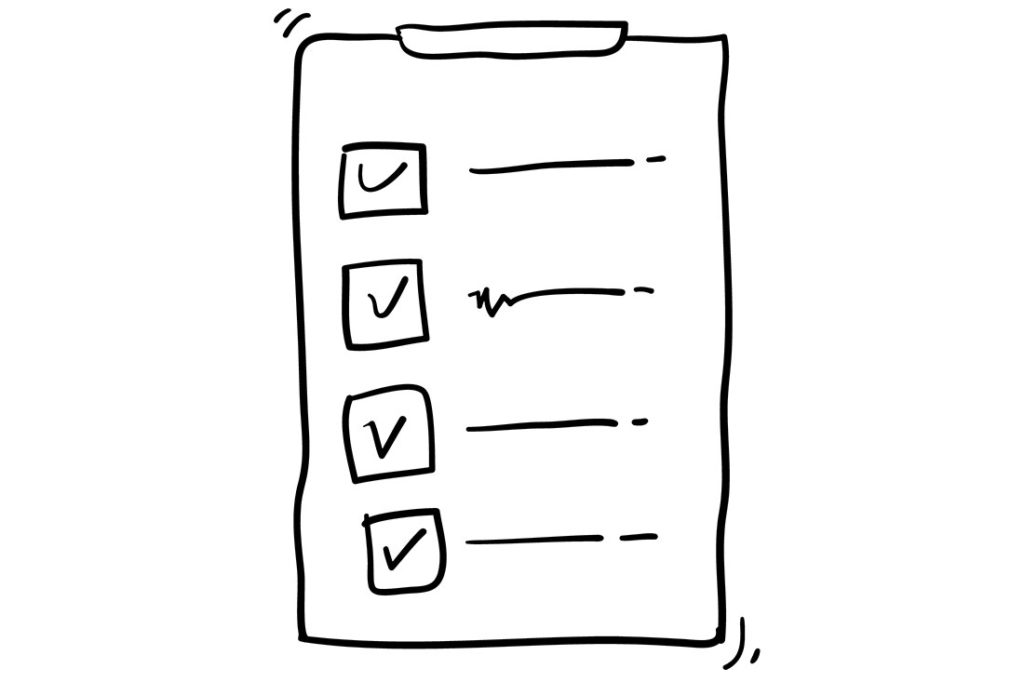Most of us go into January with our resolutions strongly in the front of our minds. Many of us even make it through the month with flying colors, believing that because we have hit the 30-day mark, that we’ve forever changed our habits. However, as we traverse into February and March, those new habits often fall by the wayside, while the old habits we’re trying to change stay firmly rooted. Is there any way to change the pattern for good?
As Charles Duhigg explains in his book The Power of Habit, all habits are made up of three key components: cue, routine and reward. So one of the best ways to stick to your habits and create stronger, more productive routines is to link your habits together in an unbroken chain. That means that one single cue will become the impetus for a whole slew of healthy habits, because the routine and reward of the first habit will become the cue for the next one, and so on.
Of course, adding a whole bunch of new habits to your daily routine is likely going to take some serious focus and dedication, at least when you’re starting, so here are some tips on how to create strong habit chains that will become second-nature in no time.
1. Explore your goals.
Maybe you have a list of New Year’s resolution habits, or maybe they’re still floating vaguely around in your head. What do they look like? Drink more water? Lose weight? It’s time to get way more specific. Get a clear goal in mind, like running a marathon in September, or drinking 64 ounces of water every day. Then break those goals down into actionable steps that can become a part of your routine.
Let’s take the water example. Maybe you put a 16-ounce glass of water next to your bed at night and drink it first thing in the morning. Now you’re already a quarter of a way to your daily goal. Do the same thing at night. Halfway there. Now drink 8 ounces with breakfast and lunch and another large glass with dinner (or maybe during your workout), and your goal will be fully integrated into your routine.
Related: 4 Tips for Setting Powerful Goals
2. Connect the chain.
Figuring out where you want to add habits into your routine is important, because that will clue you in to what your cue will be. For the water, you have multiple cues (unless you want to chug half a gallon of water at once): waking, sitting down for meals, and going to bed. But what if you have more than one habit goal? It’s going to take a lot of willpower and focus to come up with multiple triggers and fit them all into your daily routine. So instead, take one habit (if it’s an already established habit, even better!) and build on it to create a habit chain.
Think about what you do when you first wake up. Maybe you make your bed. Maybe you drink your glass of water. Whatever that first thing is, add on to it until you have a multi-step routine that includes some of your new habits.
For example, when I come into the kitchen each morning, the first thing I do is set a pot of water to boil for my tea. Since this is a well-established habit, I used this as my trigger for a new habit: drinking a glass of water mixed with apple cider vinegar. As I’m making my tea, I know I have to finish my less enticing beverage before I move on to caffeine. That first sip of tea is then my trigger to begin making breakfast, and putting my plate in the sink (another established habit) is my trigger to wash the dishes (underdeveloped habit) and then dry and put them away.
3. Link up rewards.
It’s important to make pleasant connections in our habit chains, because we won’t resist our new habits as much if they are linked to something the brain perceives as a reward. In the example of my routine, having a cup of tea (and that lovely first jolt of caffeine in the morning) has now become my reward for drinking a large glass of water and vinegar.
Say you need to run three miles as part of your early marathon-training schedule. Link that to an obviously rewarding habit you already have, such as listening to a favorite podcast. Make a pact with yourself that you will only listen to your favorite podcast when you lace up and go for a run. If that podcast happens to be the same length as your training time, even better.
4. Be wise with your willpower.
One of the reasons we so often fail when trying to integrate new habits into our lives is that we have a limited amount of willpower, and it tends to get used up very quickly with how many decisions we have to make every day. That’s why you should consider when your willpower and energy is at full capacity, and when you tend to fall off the wagon when you’re trying to build new habits into your routine.
For most people, willpower is at its highest point first thing in the morning, because our brain hasn’t been fatigued by decision-making yet. Since your resolve is usually highest in the morning, creating strong habit chains here makes sense. It helps to write down your habit chains at first, especially if they are long, but soon your brain’s muscle memory will begin to kick in and you’ll intuitively know what comes next. In time, your habits will be so ingrained you’ll be running on autopilot and can start focusing your energy on the next big thing you hope to accomplish.
Related: The Complete Guide to Achieving Your New Year Goals
Image by Devita ayu silvianingtyas/Shutterstock.com
[fl_builder_insert_layout slug=”amazon-affiliate-disclaimer”]










